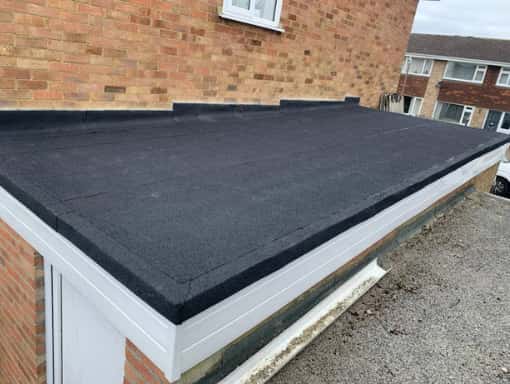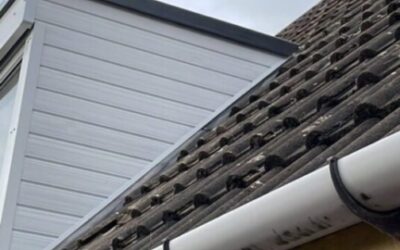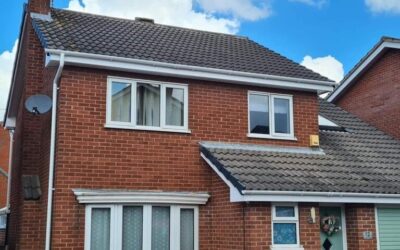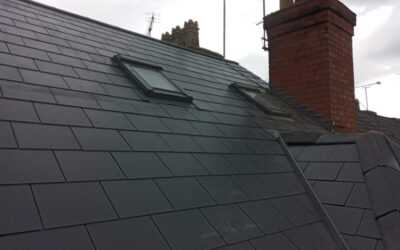Flat roofing is a roofing system with a relatively flat surface and a slight slope to allow for drainage. Commercial and industrial buildings and some residential properties have flat roofs. The roofs are flat or sloping and lack a pitched or peaked design. Flat roofing has been used for thousands of years. Some earliest examples date back to ancient civilisations in Egypt and Mesopotamia.
Several materials and systems are used in flat roofing, each with unique properties and benefits. Flat roofing systems are also installed using different techniques. This article will discuss the advantages of installing a flat roof on your house or place of business.
Flat Roofs are Cost Efficient
Flat roof systems generally have lower upfront costs than other roofing systems due to the more straightforward design and construction of flat roofs, which often require fewer materials and labour. Flat roofing materials are also generally less expensive, which can further reduce the upfront cost.
Flat roofs are designed and installed to maximise energy efficiency. Reflective coatings, for example, can help reduce the heat absorbed by the top, leading to lower energy costs for air conditioning and heating. Other energy-efficient techniques, such as incorporating solar panels or insulation, can also help reduce energy costs.
Flat roofing systems have a longer lifespan than other roof styles, which can lead to lower long-term costs. Flat roofs are less prone to damage from wind and other weather events, and their simple design makes them less likely to experience problems such as leaks or rot. Proper upkeep and regular roof repairs determine a flat roofing system’s lifespan.
Flat Roofs are Versatile
One of the significant advantages of flat roofs is their versatility. Flat roofs can accommodate a variety of structures and features, such as solar panels, gardens, and outdoor living spaces. Because of this, it makes them a favourite choice for homeowners and business owners looking to maximise the use of their roof space. Flat roofs can also be used as outdoor living or recreation areas, such as rooftop decks or patios, providing additional room for outdoor activities and gatherings. In addition, flat roofs are often used on buildings with unique or irregular shapes, as they can be easily customised to fit the specific needs and constraints of the building. Overall, the versatility of flat roofs makes them an excellent choice for many applications.
Flat Roofs are Easy to Maintain
Flat roofs have relatively simple and cost-effective maintenance requirements. Some key steps in maintaining a flat roof include cleaning the surface to remove dirt, debris, and leaves. Another way is by hiring professionals to do regular roof inspections for damage, such as cracks, splits, or leaks. Flat roofs may also need to be resealed or coated periodically to help protect the roofing material and extend the roof’s lifespan. In addition, flat roofs are often easily accessible for maintenance and repairs, as they do not have steep slopes and high elevations that can make accessing and working more challenging. Overall, the ease of maintenance of flat roofs makes them an excellent choice for homeowners and business owners looking to minimise maintenance costs and efforts.
Flat Roofs have Environmental Benefits.
Flat roofs can offer many environmental benefits. One of the vital eco-friendly features of flat roofing systems is the use of reflective coatings. Doing this can help reduce the heat absorbed by the roof, reducing energy costs for air conditioning and heating. Homeowners also have the option to convert their flat roofs into vegetative roofs or green roofs. These roofs are covered with plants and vegetation, which can help to absorb stormwater, reduce the heat island effect in urban areas, and provide additional insulation for the building. Flat roofs can also help with stormwater management, as the flat surface allows for the accessible collection and diversion of rainwater. Overall, the environmental benefits of flat roofs make them an excellent choice for those looking to reduce their environmental impact and save on energy costs.
Flat Roof Materials
Most Modern flat roofs can use single large factory-made sheets such as EPDM synthetic rubber, polyvinyl chloride (PVC), and thermoplastic polyolefin (TPO). The quality is excellent, and one-piece membranes are called single plies and are used today on many large commercial and industrial buildings.
Take the Next Step with Flat Roofing and Hire the Best Roofers
We invite you to contact Hinckley Roofing for a consultation if you consider a flat roof for your home or business. Our team of experienced professional roofing contractors has the expertise and knowledge to help you choose the best flat roofing system. We offer top-quality installation and maintenance services to ensure your flat roof is installed and maintained to the highest standards. Flat roofing is an excellent choice for many properties. We would be happy to help you explore the benefits of flat roofing and determine if it’s the right choice for you. Get in touch with us and learn more about how we can assist you with your flat roofing needs.



